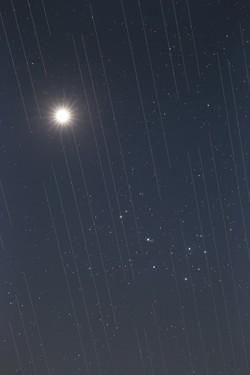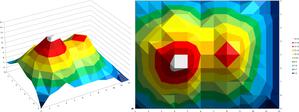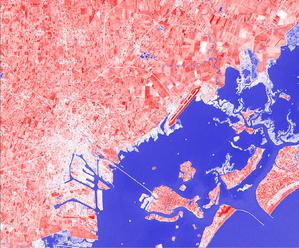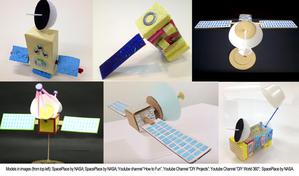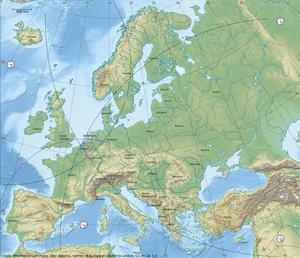Glossary term: Satellite artificiale
Description: Un satellite artificiale è un dispositivo costruito dall'uomo che viene inviato nello spazio per orbitare intorno alla Terra o ad altri oggetti del Sistema Solare, dove la gravità lo mantiene in orbita. I satelliti artificiali possono essere costruiti per svolgere diversi compiti, tra cui scattare fotografie aeree della Terra che aiutano i meteorologi a prevedere il tempo, o scattare immagini di corpi astronomici e galassie lontane, che aiutano gli scienziati a comprendere meglio il sistema cosmico. I satelliti artificiali sono anche utilizzati principalmente per le comunicazioni in tutto il mondo, come ad esempio il Global Positioning System (GPS). Il primo satellite artificiale è stato lanciato nello spazio nel 1957 dall'Unione Sovietica, con il nome di Sputnik 1.
Related Terms:
See this term in other languages
Term and definition status: The original definition of this term in English have been approved by a research astronomer and a teacher The translation of this term and its definition have been approved by a research astronomer and a teacher
The OAE Multilingual Glossary is a project of the IAU Office of Astronomy for Education (OAE) in collaboration with the IAU Office of Astronomy Outreach (OAO). The terms and definitions were chosen, written and reviewed by a collective effort from the OAE, the OAE Centers and Nodes, the OAE National Astronomy Education Coordinators (NAECs) and other volunteers. You can find a full list of credits here. All glossary terms and their definitions are released under a Creative Commons CC BY-4.0 license and should be credited to "IAU OAE".
Related Media
Sciame di satelliti contrapposti alla bellezza del cielo notturno, di Torsten Hansen, Germania
Credit: Torsten Hansen/IAU OAE
License: CC-BY-4.0 Creative Commons Attribuzione 4.0 Internazionale (CC BY 4.0) icons
Related Activities
Valleys Deep and Mountains High
astroEDU educational activity (links to astroEDU website) Description: Learn how radar altimetry from satellites works and how to put landscapes on paper.License: CC-BY-4.0 Creative Commons Attribuzione 4.0 Internazionale (CC BY 4.0) icons
Tags: Maps , Earth observation , Sentinel , Copernicus , Remote sensing , Altimetry , Radar Age Ranges: 14-16 , 16-19 Education Level: Middle School , Secondary Areas of Learning: Discussion Groups , Modelling , Social Research Costs: Medium Cost Duration: 2 hours Group Size: Group Skills: Analysing and interpreting data , Asking questions , Communicating information , Developing and using models , Using mathematics and computational thinkingA View from Above
astroEDU educational activity (links to astroEDU website) Description: How do satellites take images of the Earth surface and how do we analyse and use them?License: CC-BY-4.0 Creative Commons Attribuzione 4.0 Internazionale (CC BY 4.0) icons
Tags: Maps , Climate , Landsat , Earth observation , Sentinel , Copernicus , Remote sensing , Vegetation Age Ranges: 14-16 , 16-19 Education Level: Middle School , Secondary Areas of Learning: Social Research Costs: Low Cost Duration: 1 hour 30 mins Group Size: Group Skills: Analysing and interpreting data , Asking questions , Communicating information , Constructing explanations , Developing and using models , Engaging in argument from evidence , Using mathematics and computational thinkingBuild Your Own Artificial Satellite
astroEDU educational activity (links to astroEDU website) Description: Build a satellite to learn what they are made of and their uses.License: CC-BY-4.0 Creative Commons Attribuzione 4.0 Internazionale (CC BY 4.0) icons
Tags: Art , Creativity , Hands-on , Model Age Ranges: 8-10 Education Level: Primary Areas of Learning: Discussion Groups , Interactive Lecture , Modelling Costs: Low Cost Duration: 1 hour 30 mins Group Size: Group Skills: Communicating information , Developing and using modelsWhere on Earth am I?
astroEDU educational activity (links to astroEDU website) Description: How do satellite-based positioning and GPS navigation work?License: CC-BY-4.0 Creative Commons Attribuzione 4.0 Internazionale (CC BY 4.0) icons
Tags: Clocks , Geography , Maps , GPS , Countries , Speed of light , Galileo Age Ranges: 14-16 Education Level: Middle School Areas of Learning: Guided-discovery learning , Problem-solving Costs: Low Cost Duration: 1 hour 30 mins Group Size: Group Skills: Analysing and interpreting data , Asking questions , Communicating information , Constructing explanations , Developing and using models , Using mathematics and computational thinking